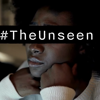A history of
Fight for Sight.
Discover more about the history of the vision loss charity forged from Fight for Sight and Vision Foundation. The new organisation has a vision to Save Sight. Change Lives. We do this by funding scientific research and social change.
Below we highlight some of the milestones that made us the ambitious charity we are today.

2025 New look, renewed commitment
2025: New look charity shops
Our fleet of charity shops have a bold new look reflecting our bold rebrand. To celebrate, we invited MPs to visit two of our shops located across London. Find out more and learn how to drop off donations or snap up a premium pre-loved item.

March 2025: We appoint our first Chief Scientific Advisor
Our new Chief Scientific Advisor is Professor Alan Stitt. He will support us in building a strategy that develops talented researchers, connects researchers from different scientific institutions, and funds discovery science.

February 2025: launching a network to bring researchers together
Bringing brilliant minds together to collaborate on research into eye disease could accelerate our understanding, diagnosis, prevention, and treatment of conditions that lead to vision loss and blindness. In a UK first Fight for Sight launched the UK Vision Research Network (UKVRN).
The first step in building this network was launching a doctoral training programme where students would have co-supervisors from different institutions.
2024: A bold vision
2024: Save Sight. Change Lives.
Our new organisation disrupted the vision loss sector with a bold vision to Save Sight. Change Lives. In a foundational year for our charity, we built on the merger of Fight for Sight and Vision Foundation, introducing a bold new look, narrative, and tone of voice.
The brand narrative is our north star. It drove the merger and informs everything we do. We know when someone faces a diagnosis of vision loss, they face two profound questions. Can this be stopped? How do I live my life? As funders of scientific research and social change, we can answer both questions positively. As our mission says, “We fund the brilliant minds and bright ideas that put change in sight for everyone impacted by vision loss.”
2024 A thriving social change sector
We want to change lives, which we do by funding innovative social change projects - the bright ideas that mean blind and vision-impaired people discover connections, resilience, and confidence.
The Capacity Building Fund, which we launched in 2024, was a perfect example of this work and enabled charities to innovate and build sustainable futures that ensure everyone has the same opportunities, regardless of vision loss.
2024: focussing on loneliness and isolation
We commissioned the Outside report by Abertay University to explore the experiences of loneliness and isolation among people who are blind or vision-impaired. We used these insights to fund projects designed to support blind and vision impaired people to build connections, confidence and independence.
2020s: merger matters
2023 Vision Foundation and Fight for Sight merge
The new charity is the UK’s only significant independent charitable funder of both scientific research and social change to achieve fairer outcomes for blind and vision impaired people.
We have the bold ambition of changing the world for blind and vision impaired people. Our vision is to Save Sight. Change Lives.

2022: Resilience Fund
Vision Foundation launched the Resilience Fund to provide funding to support sight loss organisations to become more sustainable.
The fund was launched as a response to the challenges of the pandemic, with a second round of funding in January 2024.
The fund makes up part of the £1.5 million we’ve spent on funding social change so far.
-
- Almost £30m
- Our commitment to scientific and social change funding over our current strategy period.
-
- 50%
- of vision loss is preventable
2022: Groundbreaking report into domestic abuse among blind and vision impaired people
Vision Foundation launched The Unseen alongside the charity SafeLives. This was the first-ever research into the shocking scale and nature of domestic abuse among blind and vision impaired people.
To address these issues, Vision Foundation launched its first-ever nationwide grant-giving round, investing just under £200k into projects focused on tackling domestic violence and abuse.
One successful project was the development of a toolkit to make refuges more accessible.
2021: A centenary celebration
Vision Foundation marked its centenary year with an appeal that raised £784,000 to support employment-related research for blind and vision impaired people.
To link to this, we commissioned research by the University of Birmingham. The See My Skills report was used to inform funding for projects to help tackle barriers and open opportunities for people who are blind and vision impaired.
2020: Support through the pandemic
The Vision Foundation gave out Covid-19 response grants to support sight loss charities through the pandemic.
And it published research showing that lockdown was worsening the exclusion, isolation and anxiety already faced by many blind and partially sighted people.
The campaign #BlindLockdownLife was launched to raise awareness of their needs during the multiple lockdowns.
2019: The Vision Foundation is born
The Greater London Fund for the Blind was renamed the Vision Foundation. It published a five-year strategy to make London accessible for everyone with vision loss and to reduce preventable blindness.
Following the merger with Fight for Sight, we'll focus nationwide on how we can deliver impact. In our social change funding programme for 2024, we have 37 live grants, with a total distribution of £947,200.
2013: Involving patients in our work
Fight for Sight was part of the Sight Loss Priority Setting Partnership. This partnership was designed to determine the priorities of patients, carers, and eye health professionals and use those priorities to help set the agenda for research funding.
Since then, many grants have been made to address those priorities.
Our five-year scientific research strategy sets out our plans for Patient Public Involvement and Engagement (PPIE).
2012: Toward a new treatment for glaucoma
Research part-funded by us began to test the effectiveness of a laser-based treatment, compared with the standard method of using eye drops for newly diagnosed cases of glaucoma.
After this research and a follow-up study proved the effectiveness of Selective Laser Trabeculoplasty, it became the recommended treatment in 2022.
This is saving the NHS money and means people don’t have to use eye drops for life.

"It was so brilliant seeing patients after gene therapy surgery, with enlarged fields of vision who come back to my clinic and say, ‘I can see more. My vision in the dark has improved, and I can see the edges much better now.’”
2007: Understanding the link between vision and the brain
Professor Matteo Carandini became GlaxoSmithKline/ Fight for Sight Professor of Visual Neuroscience. We’ve funded Professor Carandini’s chair position at UCL’s Institute of Ophthalmology, which led to over 15 years of prestigious research that has attracted further funding.
His team’s work has led to a better understanding of how vision affects the activity of neurons in the brain. They’ve developed advanced techniques to study electrical activity in individual neurons in the brain and methods to study vision during decision-making.
More recently, we’ve funded work that has advanced our understanding of how eye scans can lead to earlier diagnosis of dementia.
2007: Clinical Trial
In 2007, we helped fund the team that ran the world's first clinical trial to test gene therapy treatment for inherited eye diseases. Clinical trials (where new treatments are tested in human beings) are an important stage in making new cures a reality.
One of our current clinical trials, the TIGER trial at King’s College London, explores whether combining surgery with the existing treatment of anti-VEGF injections could improve results for people with wet age-related macular degeneration.
2007: Children's Eye Centre
We presented Moorfields Eye Hospital with £1 million to develop the Children's Eye Centre research unit.
That work continues today through our funding of several projects at the UCL Institute of Ophthalmology, which is Moorfields’ research partner.
We’re also funding research projects at more than 15 institutions around the UK, from Plymouth to Ulster, Cardiff to Leeds.
2006: The Vision Fund
We awarded our first special project grants, which later became The Vision Fund.
Since then, we have funded ground-breaking research into the lived experience of people who are blind and vision impaired, with a focus on employment, domestic violence and abuse, and loneliness and isolation.
The insight we gather informs the social change projects we invest in.
For example, the work we funded on domestic violence and abuse has led to an accessible toolkit for blind and vision impaired people who are victims or survivors of domestic abuse, which could encourage more to seek help.

2005: Largest national charity funding eye research
Fight for Sight merged with the British Eye Research Foundation to become the largest national charity dedicated to funding eye research in the UK.
As of 2024, our combined charities have invested over £50 million into eye research.
The cutting-edge research we fund includes new gene editing techniques which could lead to cures for inherited retinal diseases.

2003: Royal support
With the loss of our beloved patron, the Queen Mother, HRH The Countess of Edinburgh agrees to become a patron in 2003 (until 2024). The Duchess started supporting eye health in 1999 and has remained an ardent supporter of initiatives, such as Vision 2020, that promote solutions for those with sight loss and eye health needs. HRH supports people with sight loss at home in the UK, across the Commonwealth and globally.
Discover more about the impact of our scientific research and social change projects by reading our impact stories.

1998: High-profile support
Sir John Mills CBE becomes our first Senior Vice President (Vision Foundation) to coincide with his 90th birthday celebration. Sir John, who died in 2005, had macular degeneration and struggled with his eyesight in his later years.
1997: Tracking rare eye conditions
Some eye conditions are rare, which can make diagnosis difficult. We helped fund the creation of The British Ophthalmological Surveillance Unit (BOSU).
BOSU enables investigators to identify patients newly diagnosed with specific rare eye conditions through a monthly reporting (active surveillance) system. It involves all senior ophthalmologists across the UK.
The unit has supported 87 completed studies, leading to over 90 published papers. In 2024, we awarded five more years of funding, which will help develop a modern digital research platform.
1986: Retail outlets launched
Our first ‘Geranium’ shop hit the high street in London: today, we have a whole fleet of shops in and around the city.
The shops are an invaluable source of income thanks to generous donations and a large team of incredible volunteers.
1993: Flying high
One hundred GLFB supporters create a new record for the Guinness Book of Records by pulling three jet airliners over a distance of 100 metres. Each at a different airport.

1983: UK Corneal transplant service
The Iris Fund helped to establish the UK Corneal Transplant Service, which helped restore sight to tens of thousands of people.
The service went on to open the Bristol Eye Bank, introducing organ culture storage of corneas to the UK for the first time. Today, the Bristol Eye Bank is one of the largest in Europe.
1965: Funding vision loss research
In 1965, Professor Norman Ashton founded Fight for Sight. He was director of pathology at the Institute of Ophthalmology and a world leader in eye disease research.
He published over 200 papers and trained numerous ophthalmic pathologists who spread their knowledge around the globe.
In 1965, we established The Prevention of Blindness Fund at the Royal Eye Hospital in Southwark, London (the hospital no longer exists today). The charity later changed its name to the Iris Fund for Prevention of Blindness and became part of Fight for Sight.
We continue to fund research that advances the understanding, diagnosis, prevention and treatment of eye disease.
-
- 200
- The number of papers published by Professor Norman Ashton, who founded Fight for Sight.
-
- 80%
- Our publications receive 80 percent more citations and are twice as likely to be highly cited than the world average.
1953: Preventing vision loss in premature birth
The future founder of Fight for Sight, Professor Norman Ashton, discovered a link between premature babies receiving too much oxygen and blindness.
His discovery led to the careful control of oxygen delivery to premature infants and saved the sight of many babies.
Since then, work supported by Fight for Sight has helped to develop techniques to save the sight of premature babies with retinopathy.

1922: Fundraising activity 'flowers'
The Greater London Fund for the Blind held its first ‘Geranium Day’ mass fundraising appeal raising money across London.
In the early years, GLFB gave real geraniums to people who donated. More recently, we replaced flowers with a sticker of a red geranium.
The last Geranium Day was held in 2019.
1921: Our journey begins
Sir Arthur Pearson sowed the seeds of our charity in 1921 when he founded the Greater London Foundation for the Blind (GLFB), symbolised by the Geranium, an enduring flower of determination.
Sir Arthur, who lost his sight through glaucoma, set up fundraising activities to amplify the voices of people experiencing vision loss in London.
Today, we're funding social change projects across the UK.
We'll monitor and report on the impact of these projects so they can be recreated and scaled.

We no longer celebrate Geranium Day but there are many ways you can support us to 'Save Sight. Change Lives.' from baking to bike rides, marathons, volunteering, and more.

- 2025: recent history
- 2024: Boldly going
- 2023: Merger Matters
- 2010-2020
- Early 2000s
- 1980s & 1990s
- Beginnings
-
2025: recent history
-
2024: Boldly going
-
2023: Merger Matters
-
2010-2020
-
Early 2000s
-
1980s & 1990s
-
Beginnings
- 2025: recent history
- 2024: Boldly going
- 2023: Merger Matters
- 2010-2020
- Early 2000s
- 1980s & 1990s
- Beginnings